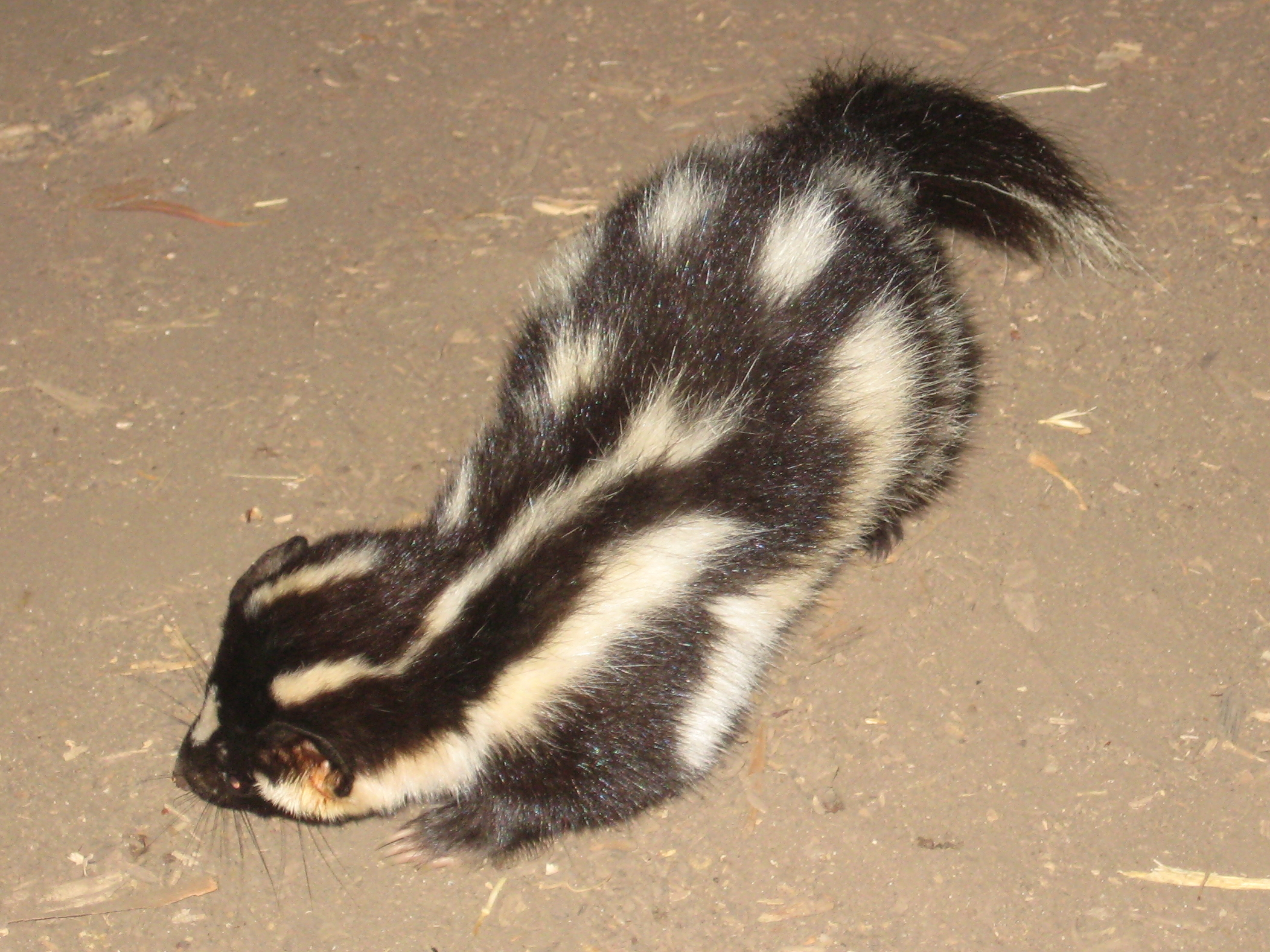Western spotted skunk
(Spilogale gracilis)

Description
With a total length of 35–45 cm (14–18 in),the western spotted skunk is smaller than the striped skunk (Mephitis mephitis).Males,which weigh 336 to 734 g (11.9 to 25.9 oz),are significantly heavier than females,at 227 to 482 g (8.0 to 17.0 oz),but only about 6% longer,on average.The adult is boldly striped black and creamy white,with three longitudinal stripes on each side of the front part of the body,and three vertical stripes on the hind-parts.One pair of longitudinal stripes runs either side of the spine,with the second pair running over the shoulders,and extending forward onto the face.The third pair is lower over the shoulders,and curves downward at the middle of the body to form the first pair of vertical stripes.Behind this,the second pair of vertical stripes rise from the knees to the rump,while the final stripes are often little more than spots.The ears are short and rounded,while the face is marked with a white spot between the eyes,and a white patch below each ear.The animal has a conspicuously large,long-haired tail,measuring 10 to 16 cm (3.9 to 6.3 in).The hair on the tail is mostly black,but is white at the tip,and sometimes also on the upper surface.The claws on the fore-feet are longer,and more curved,than those on the hind feet.As with other related species,western spotted skunks possess a pair of large musk glands that open just inside the anus,and which can spray their contents through muscular action.The musk is similar to that of striped skunks,but contains 2-phenylethanethiol as an additional component,and lacks some of the compounds produced by the other species.These differences are said to give western spotted skunk musk a more pungent odor,but not to spread as widely as that of striped skunks.
Taxonomic tree:







